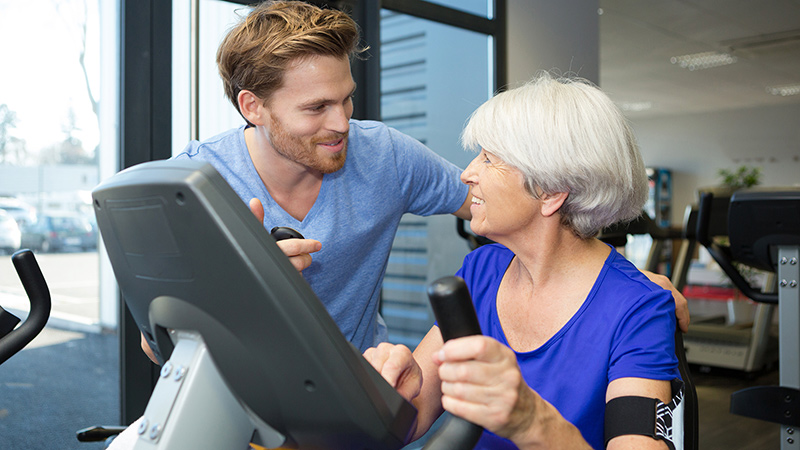Called Client-Directed Outcome-Informed therapy (CDOI), this technique has actually been made use of by several drug treatment programs, such as Arizona's Department of Health Services. Psychoanalysis, a psychotherapeutic method to habits modification established by Sigmund Freud and modified by his followers, has also provided a description of compound abuse. This orientation suggests the primary cause of the addiction syndrome is the unconscious need to amuse and to enact various type of homosexual and perverse dreams, and at the exact same time to avoid taking responsibility for this.
The addiction syndrome is also assumed to be related to life trajectories that have taken place within the context of teratogenic processes, the phases of that include social, cultural and political elements, encapsulation, traumatophobia, and masturbation as a kind of self-soothing. Such an approach lies in stark contrast to the methods of social cognitive theory to addictionand certainly, to behavior in generalwhich holds human beings to regulate and control their own environmental and cognitive environments, and are not merely driven by internal, driving impulses.
A prominent cognitive-behavioral approach to addiction healing and therapy has actually been Alan Marlatt's (1985) Relapse Avoidance method. Marlatt describes four psycho-social processes appropriate to the dependency and relapse procedures: self-efficacy, outcome expectancy, attributions of causality, and decision-making procedures. Self-efficacy refers to one's ability to deal properly and efficiently with high-risk, relapse-provoking situations.
Attributions of causality refer to a person's pattern of beliefs that relapse to drug use is an outcome of internal, or rather external, short-term causes (e.g., permitting oneself to make exceptions when confronted with what are judged to be unusual situations). Finally, decision-making procedures are implicated in the relapse procedure as well.
Furthermore, Marlatt worries some decisionsreferred to as obviously unimportant decisionsmay appear irrelevant to relapse, but might in fact have downstream ramifications that position the user in a high-risk scenario. http://israelwrtg251.lucialpiazzale.com/getting-the-how-to-get-into-rehab-with-no-money-to-work For example: As an outcome of rush hour, a recuperating alcoholic may decide one afternoon to exit the highway and travel on side roads.
If this person is able to utilize effective coping strategies, such as sidetracking himself from his yearnings by switching on his preferred music, then he will avoid the regression threat (PATH 1) and heighten his effectiveness for future abstinence. If, nevertheless, he lacks coping mechanismsfor circumstances, he may begin pondering on his yearnings (PATH 2) then his effectiveness for abstinence will decrease, his expectations of favorable outcomes will increase, and he may experience a lapsean separated go back to substance intoxication.
Unknown Facts About How To Find A Drug Rehab Program
This is an unsafe pathway, Marlatt proposes, to full-blown relapse. An additional cognitively-based design of compound abuse healing has been provided by Aaron Beck, the dad of cognitive treatment and championed in his 1993 book Cognitive Therapy of Substance Abuse. This treatment rests upon the assumption addicted people possess core beliefs, frequently not available to immediate awareness (unless the patient is also depressed).
When craving has been triggered, permissive beliefs (" I can deal with getting high just this one more time") are assisted in. As soon as a liberal set of beliefs have actually been activated, then the individual will activate drug-seeking and drug-ingesting habits. The cognitive therapist's job is to reveal this underlying system of beliefs, examine it with the client, and thus demonstrate its dysfunction.
Thinking about that nicotine and other psychedelic compounds such as drug trigger comparable psycho-pharmacological Check over here pathways, an emotion guideline method may apply to a large array of compound abuse. Proposed models of affect-driven tobacco use have focused on negative reinforcement as the primary driving force for addiction; according to such theories, tobacco is used due to the fact that it helps one escape from the unwanted effects of nicotine withdrawal or other negative moods.
Mindfulness programs that motivate clients to be familiar with their own experiences in today moment and of feelings that develop from thoughts, appear to prevent impulsive/compulsive actions. Research study likewise suggests that mindfulness programs can reduce the usage of substances such as alcohol, drug, amphetamines, marijuana, cigarettes and opiates. For instance, somebody with bipolar condition that struggles with alcohol addiction would have dual diagnosis (manic anxiety + alcohol addiction).
According to the National Study on Substance Abuse and Health (NSDUH), 45 percent of individuals with addiction have a co-occurring psychological health disorder. Behavioral models utilize principles of functional analysis of drinking behavior. Habits designs exist for both working with the substance abuser (neighborhood support approach) and their family (neighborhood reinforcement technique and family training) - how to get insurance to pay for drug rehab.
This design lays much focus on making use of problem-solving techniques as a means of assisting the addict to get rid of his/her dependency. Regardless of continuous efforts to combat dependency, there has actually been evidence of clinics billing patients for treatments that may not guarantee their recovery. This is a major problem as there are numerous claims of fraud in drug rehab centers, where these centers are billing insurance coverage business for under providing much needed medical treatment while exhausting clients' insurance coverage advantages.
About How Many Drug And Alcohol Rehab Centers Are There In The Us
Under the Affordable Care Act and the Mental Health Parity Act, rehab centers have the ability to expense insurance provider for drug abuse treatment. With long wait lists in limited state-funded rehabilitation centers, questionable personal centers rapidly emerged. One popular design, called the Florida Design for rehab centers, is frequently slammed for deceptive billing to insurance provider.
Little attention is paid to clients in regards to addiction intervention as these patients have actually often been understood to continue drug usage throughout their stay in these centers. Since 2015, these centers have been under federal and state criminal examination. Since 2017 in California, there are just 16 private investigators in the CA Department of Health Care Services investigating over 2,000 certified rehab centers.

Partnership for Drug-Free Children - Where Families Find Responses. Recovered 24 October 2017. Marlatt, G, Alan (2005 ). New York City: The Guilford Press. pp. 81. ISBN 1-59385-176-6. Abuse, National Institute on Drug Abuse. " Concepts of Reliable Treatment". Schaler, Jeffrey Alfred (1997 ). "Dependency Beliefs of Treatment Michael Vick Providers: Elements Describing Variation".
4 (4 ): 367384. doi:10 (how to start a drug rehab program).3109/ 16066359709002970. hdl:. ISSN 1476-7392. NIDA InfoFacts: Treatments Methods for Drug Dependency National Institute on Drug Abuse (NIDA). Obtained on 2010-08-17 Principles of Drug Dependency Treatment National Institute on Substance Abuse (NIDA) > " Motivational Interviewing". SAMHSA. Archived from the original on 13 December 2012. Stitzer ML, Petry NM, Peirce J (2010 ).
Journal of Compound Abuse Treatment. 38 Suppl 1: S619. doi:10.1016/ j.jsat. 2009.12.010. PMC. PMID 20307797. Scott, William C.; Kaiser, David; Othmer, Siegfried; Sideroff, Stephen I. (7 July 2009). "Effects of an EEG Biofeedback Procedure on a Mixed Compound Abusing Population". The American Journal of Drug and Alcohol Abuse. 31 (3 ): 45569.
PMID 16161729. Dehghani-Arani, Fateme; Rostami, Reza; Nadali, Hosein (20 April 2013). " Neurofeedback Training for Opiate Addiction: Enhancement of Mental Health and Yearning". Applied Psychophysiology and Biofeedback. 38 (2 ): 133141. doi:10.1007/ s10484-013-9218-5. PMC. PMID 23605225 (how much does outpatient drug rehab cost). Arani, Fateme Dehghani; Rostami, Reza; Nostratabadi, Masoud (July 2010). "Efficiency of Neurofeedback Training as a Treatment for Opioid-Dependent Clients".
Not known Facts About Where Are The Best Drug Rehab Centers
41 (3 ): 170177. doi:10.1177/ 155005941004100313. PMID 20722354. Dalkner, Nina; Unterrainer, Person F.; Wood, Guilherme; Skliris, Dimitris; Holasek, Sandra J.; Gruzelier, John H.; Neuper, Christa (26 September 2017). " Short-term Beneficial Impacts of 12 Sessions of Neurofeedback on Avoidant Personality Accentuation in the Treatment of Alcohol Usage Disorder". Frontiers in Psychology. 8: 1688.
